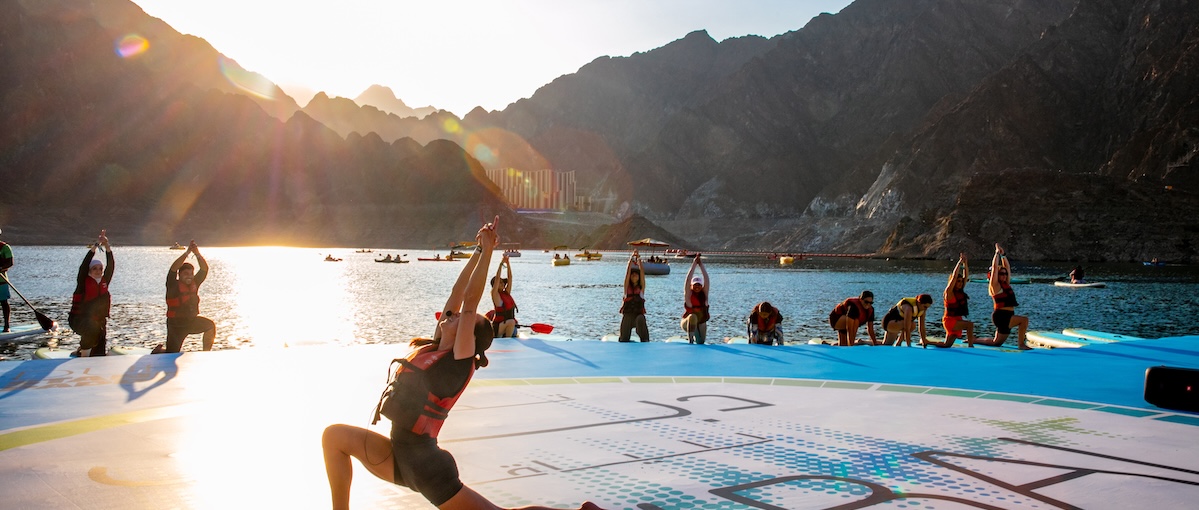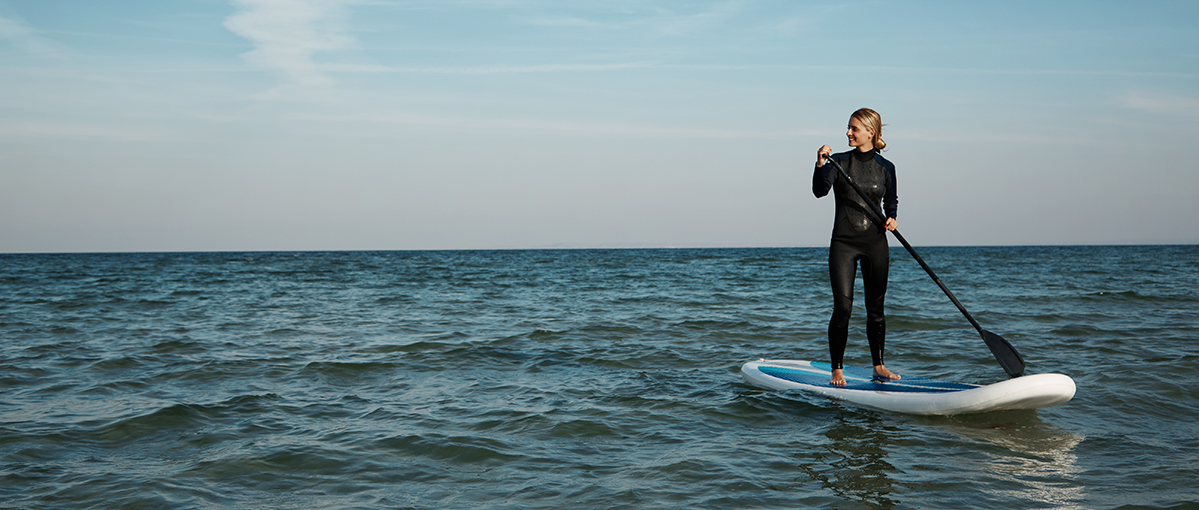Stand-up paddleboarding (SUP) is not only super fun but also a fantastic workout and the perfect way to spend time in nature and on the water. It’s also a great way to get your 30 minutes per day during Dubai Fitness Challenge!
There are plenty of places to rent a board in Dubai so If you’re keen to learn more about paddleboarding then our guide on how to paddle board for beginners will help get you started. From choosing the right gear to mastering basic techniques, it’s time to start your SUP adventure!
- Choose the right equipment
Whether you’re planning on buying a board or heading to the beach to rent one, beginners boards should be wider and longer for stability. Choose an inflatable SUP for ease of transport and make sure to choose a paddle that’s lightweight and adjustable to your required length. Most importantly, make sure that your board has a leash to fasten around your ankle to stop it from floating off should you fall.

- Find the right place
Start on calm water and avoid waves and strong currents – this will allow you to learn how to stand on a paddleboard and keep you in control and feeling safe.
- Basic positioning
It may sound obvious but be sure to face the right way. Before you get on the paddleboard check that the fins are at the back, stand in the middle on the ‘deck’ area, keep your feet shoulder-width apart, your knees slightly bent for balance and look straight ahead, not down. Easy!
- Hold your paddle correctly
First thing’s first – make sure that you’re holding your paddle the right way round, meaning it should scoop the water. Hold the paddle with one hand at the top and the other near the centre – and place in the water at a rough 45-degree angle.
- Paddling technique
Ok so you’re standing on the board, paddle in your hands – now it’s time to paddle! Use your core and not just your arms to power your strokes, reaching forward with the paddle and pulling it back towards you through the water. Alternate sides to maintain balance and steer in the direction you wish to go.
- Turning and going backwards
To turn right, plant the paddle on the left side of the board and to turn left do the opposite. Remember to use your core and keep your knees slightly bent.

- Falling and getting back on
Don’t panic, even the most experienced paddle boarders fall into the water and it’s nothing to fear, but it is important to know how best to fall and how to get back on. When you fall, try to fall away from your board to avoid falling on it or on the fins. With your leash attached, the board won’t float away so don’t worry about that. To get back on, swim to your board and push yourself up using your hands and knees – much like getting out of a swimming pool.
- Safety first
A few little pointers for how to paddleboard safely. Firstly, check weather conditions before heading out and if the wind picks up or weather turns, lie down on your board and head back using your arms as on a normal surfboard. Be mindful not to get too close to others in the water and avoid obstacles. And if you feel safer, wear a life vest for extra security – at least until you get more confident on your board.
- Don’t give up
If it doesn’t feel as easy as it looks the first time round then keep practicing because the more you paddle, the better you’ll become. Start with short sessions and gradually increase your time on the water.
- Have fun!
The most important rule of all! SUP is a fantastic way to relax and enjoy the water and the views of Dubai’s coastline. Go out with friends or family, make a day of it on the beach and get fit trying something new. You’ll be on your way to becoming a SUP pro!
Now that you've mastered the basics, be sure to register for Dubai Stand Up Paddle, presented by RTA to put your new skills to the test.







FIND YOUR CHALLENGE
#Dubai30x30